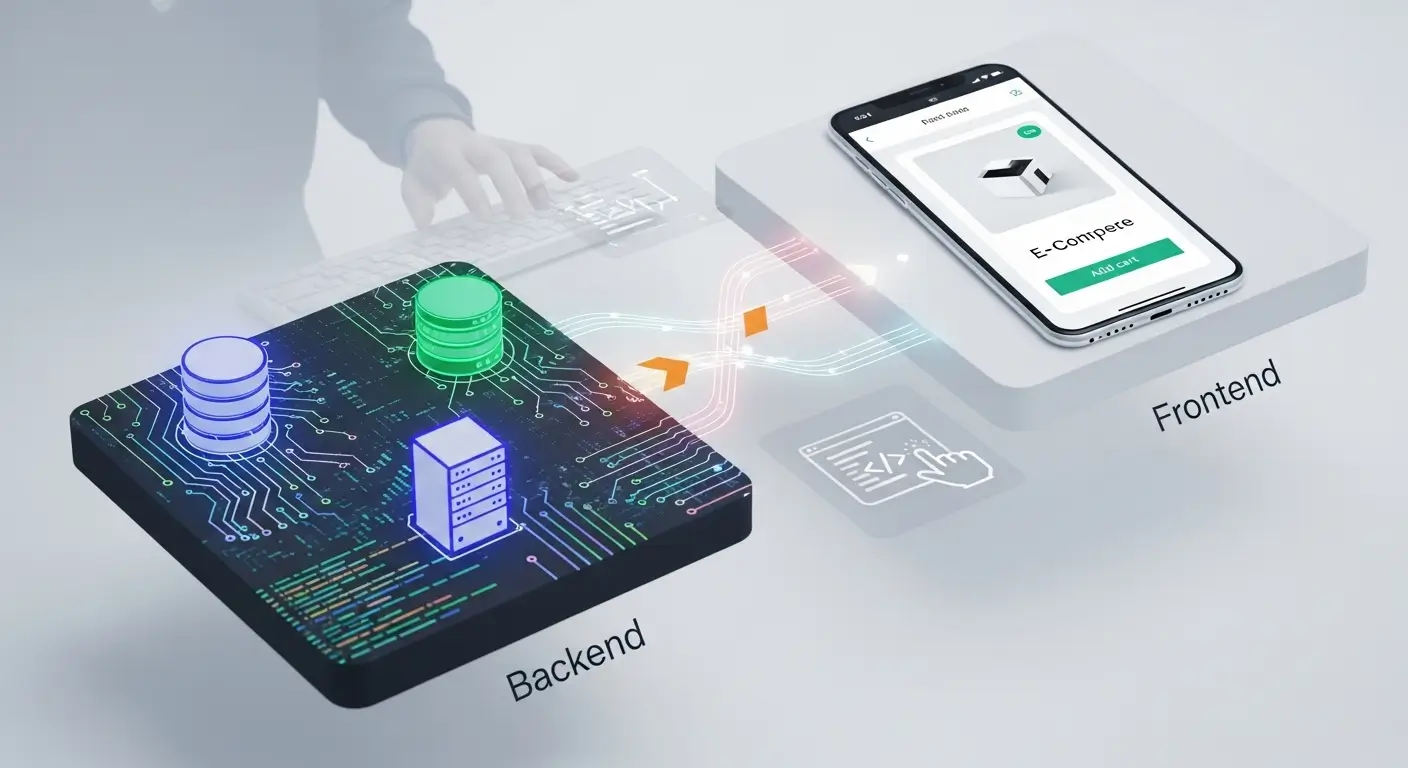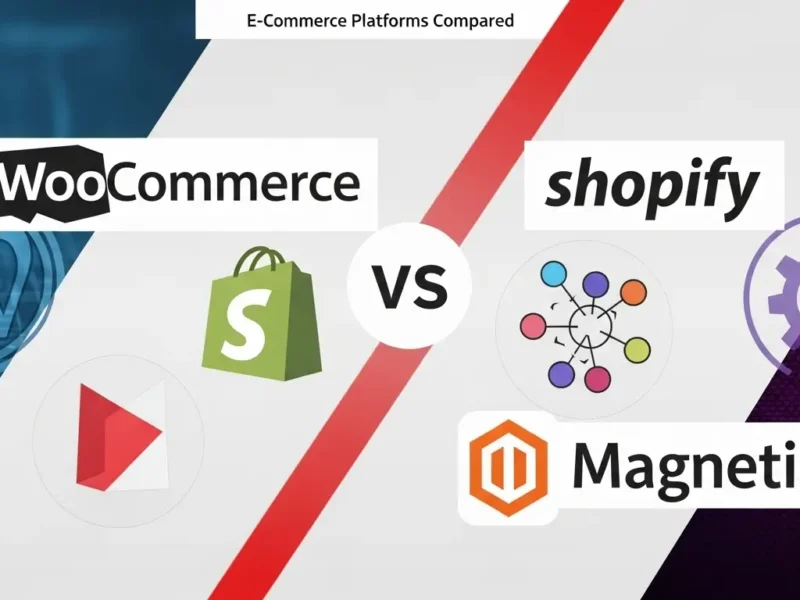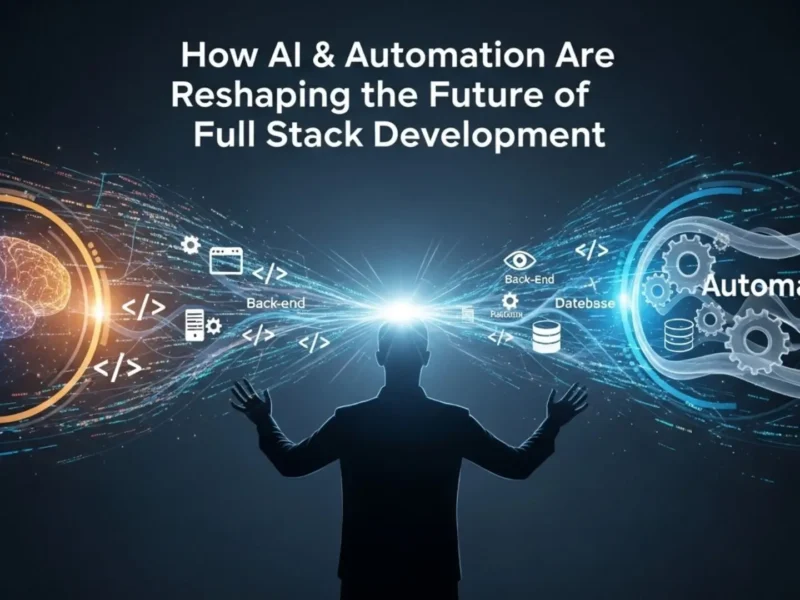The e-commerce landscape is in constant flux, demanding greater flexibility, speed, and customization from online storefronts. Traditional monolithic platforms, while robust, often struggle to keep pace with these evolving needs, presenting limitations for ambitious full-stack developers. Enter headless commerce, a revolutionary approach that deconstructs the conventional e-commerce stack, empowering developers to build truly bespoke, high-performing, and future-proof online experiences.
For the full-stack developer, headless commerce isn’t just a trend; it’s an opportunity. It liberates you from the confines of rigid themes and templates, allowing you to leverage your expertise across modern frontend frameworks, powerful backend services, and a plethora of APIs. A full stack development company seeking to offer cutting-edge e-commerce solutions will find this approach invaluable. This comprehensive guide will equip you with the knowledge to navigate the exciting world of building a headless commerce site, from understanding its core principles to mastering its implementation.
What is Headless Commerce? The Deconstructed E-commerce Stack
At its core, headless commerce refers to the decoupling of the frontend (the “head” – what users see and interact with, like your website, mobile app, or IoT device) from the backend (the “body” – the e-commerce engine that manages products, orders, customers, and payments).
In a traditional e-commerce setup, the frontend and backend are tightly coupled, meaning they come as a single, integrated unit. Think of platforms like Magento or older Shopify instances where your design (theme) is directly tied to the underlying commerce logic. While convenient for quick launches, this monolithic structure often leads to performance bottlenecks, limited design freedom, and difficulties integrating with external services.
Headless commerce, by contrast, operates on an API-first principle. The backend exposes its functionalities through robust APIs (REST or GraphQL), allowing any “head” to consume and present the data. This provides unparalleled freedom in how your e-commerce experience is delivered, paving the way for truly omnichannel strategies. For a full stack developer, this means embracing a microservices architecture where you assemble the best-of-breed tools for each layer, rather than being confined to a single vendor’s ecosystem.
Why Go Headless? The Full Stack Developer’s Advantage
The shift to headless commerce isn’t just about architectural elegance; it delivers tangible benefits that directly address the challenges faced by full-stack developers and their businesses.
Unmatched Flexibility and Customization
This is perhaps the most compelling reason for full-stack developers. With a headless setup, your frontend can be built using any modern technology you prefer – React, Vue, Angular, Next.js, Nuxt.js, or even a custom framework. This means:
- Pixel-Perfect Design: Complete control over UI/UX, enabling unique brand experiences that stand out.
- Freedom from Templates: No more fighting with restrictive themes or struggling to implement complex design concepts.
- Rapid Iteration: Implement new features and designs much faster without affecting the backend logic.
Enhanced Performance and Scalability
Decoupling allows for optimized performance:
- Faster Load Times:Frontends built with modern frameworks or static site generators (SSGs) can be incredibly fast, improving SEO rankings and user experience.
- Microservices Architecture:The backend can be composed of independent services, allowing for better scalability and resilience. Individual services can be scaled up or down based on demand without affecting the entire system.
- CDN Utilization:Static assets and pre-rendered pages can be served via Content Delivery Networks (CDNs), further boosting speed.
Future-Proofing and Omnichannel Experiences
The API-first nature of headless commerce makes it inherently adaptable:
- New Sales Channels:Easily extend your e-commerce presence to new touchpoints like voice assistants (Alexa, Google Home), smartwatches, IoT devices, social commerce, or even interactive kiosks, all powered by the same backend.
- Technology Agnostic:As new frontend technologies emerge, you can adopt them without re-platforming your entire e-commerce backend.
- Seamless Integrations:Connect effortlessly with a vast ecosystem of third-party services like CRMs, ERPs, marketing automation tools, and analytics platforms.
Superior Developer Experience (DX)
For full-stack developers, headless commerce offers a more engaging and productive environment:
- Use Preferred Tools:Work with the languages, frameworks, and build tools you’re most comfortable and proficient with.
- Faster Development Cycles:Focus on specific layers without the complexities of a tightly coupled system.
- Modular Development:Break down complex features into smaller, manageable microservices, facilitating team collaboration.
Improved Security
Separating the frontend from the backend can enhance security by:
- Reduced Attack Surface:The public-facing frontend doesn’t directly expose sensitive backend logic or databases.
- API Security:Implement robust API authentication and authorization mechanisms.
The Core Components of a Headless Commerce Architecture
Building a headless commerce site involves orchestrating several distinct but interconnected components. As a full-stack developer, understanding each piece is crucial for successful implementation.
The E-commerce Backend (The “Body”)
This is the central nervous system, managing all core e-commerce functionalities:
- Dedicated Headless Commerce Platforms:These provide robust APIs for product catalog management, cart and checkout, order processing, customer management, and more. Popular options include Shopify Plus (with its Storefront API), Commercetools, BigCommerce (with its extensive API), and Moltin (Elastic Path). These platforms reduce the burden of building core commerce logic from scratch.
- Open-Source Headless Frameworks:For those seeking more control and customization, frameworks like Medusa.js (Node.js) or Vendure (TypeScript/GraphQL) offer a headless e-commerce backend that you can host and extend yourself.
- Custom Microservices:For highly specialized needs, you might build your own suite of microservices for specific functionalities (e.g., a dedicated product API, an order processing API, a user management API), connecting them to a database.
The Frontend (The “Head”)
This is where the user experience comes to life, consuming data from the backend APIs:
- Modern JavaScript Frameworks:
- React.js:Highly popular for building dynamic, single-page applications (SPAs) or highly interactive user interfaces.
- Vue.js:Known for its ease of learning and progressive adoptability, also excellent for SPAs.
- Angular:A comprehensive framework ideal for large, enterprise-level applications.
- Static Site Generators (SSGs) & Frameworks (for JAMstack):
- Next.js (React-based):Offers server-side rendering (SSR), static site generation (SSG), and API routes, making it incredibly versatile for high-performance e-commerce.
- Nuxt.js (Vue-based):Similar to Next.js, providing SSR, SSG, and a structured approach for Vue applications.
- Gatsby (React-based):Specializes in creating blazing-fast static sites, ideal for highly optimized content-heavy e-commerce.
Using SSGs often means a JAMstack e-commerce approach, delivering incredible speed and security.
- Progressive Web Apps (PWAs):These deliver app-like experiences on the web, offering offline capabilities, push notifications, and faster re-engagement, enhancing the mobile shopping journey.
Content Management System (CMS)
While the e-commerce backend handles product data, a headless CMS manages other content like marketing pages, blog posts, FAQs, and rich product descriptions that enhance the shopping experience.
- Popular Headless CMS Options:Strapi (open-source, self-hostable), Contentful, Sanity, DatoCMS, Prismic. These provide APIs to pull content into your chosen frontend.
Payment Gateways & Services
Secure and efficient payment processing is non-negotiable:
- API-First Payment Processors:Stripe, PayPal, Adyen, Braintree – these services offer robust APIs for integrating various payment methods, handling transactions, and managing subscriptions directly from your frontend or a dedicated payment microservice.
Other Essential Integrations
A complete e-commerce solution often requires more:
- Search:Algolia, Elasticsearch for fast and relevant product search.
- Marketing Automation:Mailchimp, Klaviyo, HubSpot for email marketing, segmentation.
- Analytics:Google Analytics, Segment for tracking user behavior and sales performance.
- Customer Relationship Management (CRM):Salesforce, Zoho CRM for customer management.
- Content Delivery Networks (CDNs):Cloudflare, Akamai for caching and delivering static assets globally.
A Step-by-Step Guide to Building Your Headless Commerce Site
Embarking on a headless commerce project requires a strategic approach. Here’s a developer-centric roadmap:
Step 1: Define Requirements & Choose Your Stack
- Business Needs:What are your core e-commerce functionalities? What unique features do you need?
- Traffic & Scale:Estimate anticipated traffic and growth to choose a scalable architecture.
- Budget & Timeframe:These will influence your choice between building custom solutions vs. leveraging existing platforms.
- Developer Expertise:Consider your team’s existing skills (React, Node.js, etc.) when selecting frameworks and languages.
- Backend Selection:Decide on your e-commerce engine first. Will you use a dedicated headless platform (Shopify Plus, Commercetools), an open-source framework (Medusa), or build custom microservices?
Step 2: Backend Selection & API Integration
- Platform Setup:If using a headless platform, configure your store, products, categories, and settings.
- API Exploration:Familiarize yourself with the chosen backend’s APIs (REST or GraphQL). Understand authentication, rate limits, and data structures.
- Core Integrations:Connect your chosen frontend to the backend APIs for essential functionalities: product listing, product details, add to cart, checkout, order history. This is where your e-commerce API integration skills are paramount.
Step 3: Frontend Development
- Framework Selection:Choose your preferred frontend framework (Next.js, Nuxt.js, React, Vue, etc.) based on performance needs, developer experience, and project complexity.
- UI/UX Design:Develop the user interface, focusing on responsiveness, accessibility, and an intuitive shopping journey.
- Data Fetching & State Management:Implement robust data fetching mechanisms to interact with backend APIs and manage application state efficiently (e.g., Redux, Vuex, React Context, SWR, React Query).
- Performance Optimization:Implement code splitting, image optimization, lazy loading, and leverage SSR/SSG features of frameworks for lightning-fast page loads.
Step 4: Content Management Integration
- Headless CMS Setup:Set up your chosen headless CMS (e.g., Strapi, Contentful).
- Content Modeling:Define content models for blogs, marketing pages, landing pages, and enhanced product descriptions.
- API Connection:Integrate the CMS API with your frontend to dynamically pull and display content.
Step 5: Payment & Third-Party Service Integration
- Payment Gateway:Integrate your chosen payment gateway (Stripe, PayPal, Adyen) via their APIs, ensuring secure transaction processing and PCI compliance.
- Shipping & Fulfillment:Connect with shipping carriers or fulfillment services.
- Analytics & Marketing:Integrate analytics tools (Google Analytics), CRM, and marketing automation platforms.
- Search:Implement a powerful search solution like Algolia for a superior product discovery experience.
Step 6: Testing & Optimization
- Unit & Integration Testing:Thoroughly test individual components and their interactions.
- End-to-End Testing:Simulate user flows to ensure a seamless shopping experience.
- Performance Testing:Load testing and performance audits (e.g., Lighthouse scores) are crucial to ensure speed and scalability under stress.
- Security Audits:Regularly audit your APIs and frontend for vulnerabilities.
- User Acceptance Testing (UAT):Gather feedback from real users.
Step 7: Deployment & Monitoring
- CI/CD Pipeline:Set up automated build, test, and deployment pipelines (e.g., using GitHub Actions, GitLab CI/CD, CircleCI).
- Hosting:Deploy your frontend to a platform optimized for modern web apps (Vercel, Netlify for static/serverless, or traditional cloud providers like AWS, Azure, GCP for more complex setups). Deploy your backend microservices to a scalable cloud environment.
- Monitoring & Logging:Implement robust monitoring (e.g., Prometheus, Grafana, Datadog) and logging (e.g., ELK stack, Loggly) to track performance, identify issues, and ensure system health.
Challenges and Considerations for Full Stack Developers
While headless commerce offers immense benefits, it’s not without its complexities:
- Increased Integration Overhead:You’re responsible for integrating and managing multiple distinct services.
- Orchestration:Coordinating data flow and business logic across different microservices and APIs can be challenging.
- Security Complexity:Managing API keys, authentication, and ensuring secure data transmission across various services requires diligence.
- Broader Skill Set:Requires proficiency in both frontend and backend technologies, as well as API design and cloud infrastructure.
- Maintenance:Managing updates and dependencies across a modular system requires careful planning.
Best Practices for a Successful Headless Implementation
To mitigate challenges and maximize success:
- Adopt an API-first Mindset:Design your systems around well-documented, reliable APIs.
- Focus on Performance:Prioritize speed at every layer, from backend response times to frontend rendering.
- Robust Error Handling:Implement comprehensive error logging and graceful degradation.
- Scalable Architecture:Design for future growth from day one.
- Comprehensive Testing:Automate testing across all components.
- Leverage Existing Solutions:Don’t reinvent the wheel; use battle-tested headless platforms and services where possible.
Conclusion
Building a headless commerce site represents a powerful evolution in e-commerce, offering unparalleled flexibility, performance, and future-proofing capabilities. For the full stack developer, it’s an exciting domain where your diverse skill set can truly shine, allowing you to craft unique, high-impact online shopping experiences. By understanding the core components, following a structured approach, and adhering to best practices, you can successfully deconstruct the traditional e-commerce monolith and build the next generation of digital storefronts.
Ready to take control of your e-commerce destiny and build truly custom digital experiences? The world of headless commerce awaits your expertise. Dive in, experiment with these powerful tools, and transform how businesses sell online.



